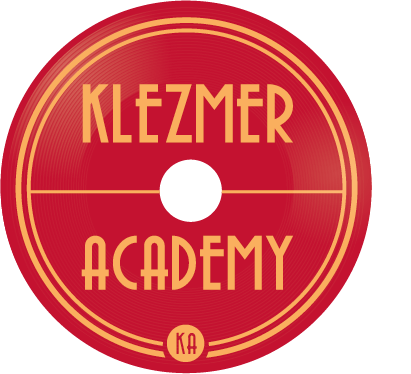When I first entered the klezmer world, I used to envy my teachers who could claim descent from several generations of klezmorim. It seemed as though such a yikhes (pedigree) would somehow enhance their ability to understand and perform the music I so desperately wanted to play. In fact, I spent the first 18 months after attending KlezKamp trying to replicate what I thought that experience might have been like, listening constantly to any spoken Yiddish and Yiddish music that I could find. I credit that experience with the relative speed with which I progressed from totally clueless to on the right path.
When I talked with my paternal grandmother about my passion for klezmer, she told me that one of the few memories she had of her father, who had died in a factory fire shortly after they arrived in America when she was 6, was of him playing the violin by candlelight in the evening. He was a dorfsyid, a Jew living in the country almost completely among gentiles, and he owned a mill, so he probably was not what we think of as a klezmer, traveling from wedding to wedding. But I did find that image of him playing by candlelight very satisfying. Perhaps the music was, after all, in my blood.
Several years later, I read a brief article in the local Jewish paper about the Boston chapter of the Jewish Genealogical Society and their Family Finder tool, which allowed people to enter their surname and see if anyone else was searching for that same name. Feeling curious, I went to the site and entered my last name. Almost immediately I found the name of someone else doing research on “Mayrent” – since this is an extremely rare surname, I figured that he must be looking for my relatives, and so I emailed him. The very next day, I received an email from him informing me that he was, indeed, researching my family. He also sent me this picture of his great grandfather (Louis Nadelman, far left) and our mutual great-great grandfather (Simon Mayrent, top center).
This was incredibly exciting. Living in Pultusk, a small city north of Warsaw, Poland, the chances were very great that this orchestra was not assembled to play Mozart! I was a little disappointed to discover that Simon played the fiddle rather than the clarinet, but that was nothing compared to the delight of discovering that I did, in fact, have something of a klezmer pedigree.
I was also delighted to compare that picture with this portrait of Simon in his later years that my grandfather had given me. Grandpa often told the story of how his grandfather had come to stay with him and his family in Chicago for a while but went back to Brooklyn after a few weeks because my great-grandmother’s home wasn’t kosher enough for him. How wonderful to compare that story and this image of a serious, somewhat dour man with the rather disheveled klezmer in the earlier picture! While it was obviously the same man, he seems to have found religion later in his life.
Several years later, when the Wholesale Klezmer Band, with whom I was playing at the time, decided to record the tune “Yikhes,” we began our arrangement the way Simon’s band might have sounded. Instead of three fiddles and a clarinet we had two fiddles, a clarinet and a flute. This was a small way to honor my own pedigree and express my gratitude to this unknown ancestor whose path and mine were converging.
“Yikhes,” as performed by the Wholesale Klezmer Band on our album, Zingen far Sholem, Tantsn far Freyd (Sing for Peace, Dance for Joy).


